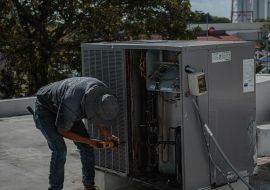Energy rating G: what does it imply and in what circumstances is it advantageous?
Energy class G: implications and advantages

Opting for a property with a G energy rating may initially seem unfavorable, but with strategic planning and targeted investments, it can present a compelling opportunity. The lower initial cost allows for essential renovations that not only enhance living conditions but also boost the property's value over time. It's crucial to assess all factors, including future energy expenses and potential governmental incentives for energy efficiency, before making a purchase.
Is investing in a house with energy class G advantageous?
Initially, purchasing a home with a G energy rating may not seem appealing, yet multiple elements can impact this decision. Energy class G signifies the lowest level of energy efficiency, contrasting with the highly efficient class A, indicating heightened energy consumption for heating, cooling, and other utilities.
Nonetheless, depending on individual circumstances and investment objectives, this choice may offer benefits. For instance, one can leverage the reconstruction bonus available until 2024.
Energy class G: what are the expenses?
Generally, acquiring a property with a G energy rating is more economical compared to those with superior energy classifications. This price gap can be substantial and attract budget-conscious buyers or investors seeking refurbishment opportunities.
It's essential to note that the operational costs of a G-rated property will be higher due to increased energy bills. Therefore, while the initial purchase price may be lower, operational expenses could offset these savings in the long run.
How does the cost compare to class A properties?
A property with an energy class G rating has an overall energy efficiency rating equal to or exceeding 3.50 EP, indicating a need for over 160 kWh per square meter annually for heating, cooling, ventilation, and hot water. This consumption is nearly ten times higher than class A properties, which range from 15 to 30 kWh per square meter.
Energy costs per kWh vary and are influenced by factors like timing and the energy provider. Assuming a flat rate of 0.277 euros/kWh, the yearly expenses for a G-class property amount to 4709 euros, compared to 692.5 euros for a class A property, resulting in a difference of 4016.5 euros. This variance has grown due to escalating energy prices, primarily driven by gas costs.
Energy class G: defining characteristics
Energy class G signifies the lowest level of energy efficiency, indicating a 3.5 times higher energy usage than a class A property. Practically, this could lead to issues like inadequate insulation, outdated heating and cooling systems, inefficient windows and doors, and a structure prone to heat loss. Residing in a G-class property can result in elevated energy bills and reduced comfort, especially during extreme weather conditions.
Typically, the assignment of a G energy rating is linked to the property's construction year. G-rated homes are often older constructions erected before stringent energy efficiency standards were implemented, typically predating the 1980s. While these buildings may possess historical or architectural appeal, they necessitate more maintenance and upgrades to enhance energy efficiency and livability.
Enhancing a G energy rating involves targeted renovations, offering substantial long-term benefits in terms of energy savings and property appreciation. Additionally, these renovations may be supported by eco-bonuses and tax incentives.
Initial actions for enhancing energy efficiency
Improving insulation is a primary step, encompassing insulating walls, roofs, and floors to reduce heat loss in winter and maintain a cool environment during summer. Outdated windows and doors can be replaced with double or triple glazed versions to enhance energy efficiency.
Additionally, installing condensing boilers, heat pumps, or underfloor heating systems can boost energy efficiency, while modern air conditioning units aid in lowering energy consumption. Incorporating solar panels can provide renewable energy, reducing reliance on traditional sources and cutting energy bills. Implementing mechanical ventilation systems can enhance indoor air quality and create a comfortable climate without excessive energy wastage.
Lastly, utilizing smart technology to regulate heating, lighting, and appliances can optimize energy use and overall efficiency.







